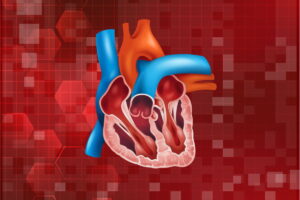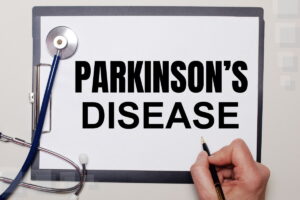

View Topics

Parkinson’s disease is a neurological disease consisting of movement disorders. Early symptoms of Parkinson’s disease include the following items: Tremor; Small Handwriting; Loss of smell; Voice changes; Sleep disorders; Slowness of movement; Changing of Facial Expression (Masked Face); Dizziness or Fainting. According to statistics, there are approximately half a million patients with Parkinson’s disease in…

Wondering what causes Parkinson’s disease, you may find different triggers. Gender, age, genetics, and environmental factors are the most frequent reasons for gradually or suddenly developing severe neurological deterioration in tremors and motor dysfunctions. According to Michael J. Fox Foundation research, a combination of the different Parkinson’s-provoked causes contributes to a sharp growth of this…

A special diet for Parkinson’s disease plays an important role in the treatment process, helping to control symptoms and improve well-being. Also, an important fact is that a properly selected diet can affect the effectiveness of drugs used in the treatment of this disease and speed up the process of achieving remission. Since, according to…

Aerobic, strength, flexibility, balance, and agility exercises are health-improvement samples for active people and those who wish to overcome motor functioning restrictions like Parkinson’s patients. To find the best exercise option, a therapist should analyze the patient’s state and choose activities with minimum risks for the injured neurological system. Physical exercises for people with Parkinson’s…

We have collected all the necessary information on this illness. We will tell you about the 5 stages of Parkinson’s disease and symptoms that commonly are the signals for PD and also give tips on how to avoid it. Some physicians allocate one more, the so-called 0 stage. This is usually characterized as a hereditary…

Wolff-Parkinson-White syndrome is a violation of the process of excitation of the ventricles, in which there is an increase in the heart rate. Normally, the pulse wave travels from the atria to the ventricles through the atrioventricular node and the bundle of His. With this pathology, secondary conduction pathways are formed, called the Kent beam,…

Parkinsonism is a neurological syndrome characterized by rigidity (a sharp increase in muscle tone), hypokinesia (slowness of movement), and tremors of rest, expressed in the limbs’ tremors. This syndrome is formed as a result of damage to certain structures of the brain and slowly progresses. The most famous and common form of parkinsonism is Parkinson’s…

Parkinson’s is a progressive movement disorder that affects millions of people. The condition impairs motor function and can have a profound impact on a person’s quality of life. The signs of Parkinson’s disease include tremors, bradykinesia, muscle rigidity, and postural instability. These motor manifestations result from the loss of dopamine-producing neurons in the cerebrum. Particularly…